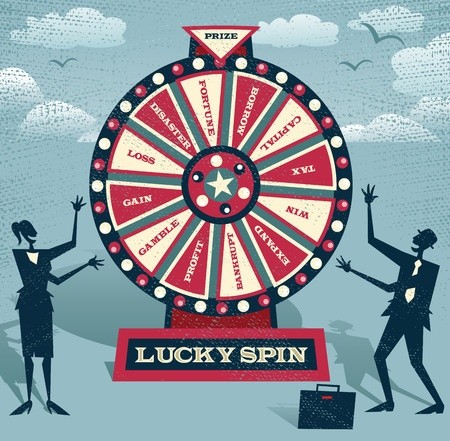The world’s knowledge is at our fingertips. Yet with seemingly unlimited data to embark on our discoveries and to guide our decision making, the ability to better our understanding of the world is countered by our amplified ability only to hear what we want to hear. Social media networks so easily allow us to select the authorities we wish to follow and to search out evidence in support of our current path.
We are social beings with a far greater need to seek the approval of like-minded peers than a desire to find evidence that may challenge our pre-existing beliefs. The echo chambers of our personal lives have infiltrated businesses as well, many times blunting versus enhancing our decision-making capability.
Our preferences, perceptions, and thoughts result from a combination of the social contexts that we live in and the mental maps that we form to guide us.[1] We have both good and bad experiences to categorize the world, to identify with or reject what we witness, build narratives, and hold worldviews based on the vast amount of information that we encounter and filter. Without these internal maps to guide us, we would not be able to find our way.
Mapping out new territory is an adventure most of us welcome. Following our tribes on social networks, we extend our mental maps by being informed with new knowledge on new topics. Wonderfully, geographic proximity is removed as a barrier.
Remapping what we already believe and know, however, is an arduous task we are all prone to avoid. When it comes to changing a core belief, that is akin to attempting to move a major city on our existing mental map; the effort is not just in its displacement, it is in remapping all the routes into and out of it that are the monumental task.
There are myriad ways we get misled by our mental fixations which injure our decision-making capability. With enormous amounts of data and storehouses of knowledge at our disposal, it is not “analysis paralysis” that we suffer. Rather, as behavioural economists and cognitive psychologists have nicely catalogued, there are over 100 ways we routinely fall prey to poor decision making with the information we have at hand. [2] Our mental maps are built to facilitate quick movement, as predators and as prey, whether it is the challenges our ancestors faced as hunters and gatherers or us in the Board Room deciding where to invest and what to cut. When we lose, we lament later that we dodged one way when we should have weaved the other. That is much easier to accept than the truth of missed prior opportunities to rework our pathways.
Common evidence of these errors borne of swift movement are the false intellectual dichotomies that take hold. Debates are of the rational versus emotional, left brain versus right, nature versus nurture, despite long being debunked by science as inadequate and misleading guides to understanding our preferences and capabilities for judgement. Important and complex matters of policy are reduced to tribal political decisions of left versus right.
Of the many mental confusions that we must sort out as business leaders, three fundamental ones stand out: time, forecasts, and change.

Time
In just over a century, we have shifted from a predominantly agrarian to an industrial and now to a digital economy. We may now be digital innovators and adopters, digital sellers and buyers, but none of this has changed the speed of most decision making. The sales cycle of B2B business software will vary from 6 to 18 months, occasionally faster but for large enterprise deals, unfortunately, many times even slower. Once decided, the adoption of new digital technologies designed to make us faster and better at what we do takes considerable time and effort to implement. Time to Value is the new metric that follows.
No matter the cycle of decisions to buy, to use, or to accrue benefits, Boardroom questions of time in the Digital Economy dutifully conform to a calendar built for an agricultural purpose. For the software provider, this quarter how many digital seeds did you plant; how many software crops did you sell? Most all businesses set budgets in the Fall, start new initiatives in the Spring.
Our confusion of time becomes apparent when we stop to reflect that we live in a digital age of urgency but are held to a calendar of activity better suited to agricultural cycles than digital ones. Meaningful cycles of time to build digital products, then sell, implement, adopt and accrue value from them are bent to conform to quarterly views. All of this occurs as we daily face the reality of how long it takes to produce meaningful outcomes.

Forecasts
Board Room gatherings begin like most others with banter like “What’s the weather like tomorrow?” If you do not know but feel compelled to answer, forecast the weather tomorrow to be the same as the weather today (sunny today, sunny tomorrow or rainy today, rainy tomorrow). You will achieve close to a remarkable 80% accuracy rate. It is considerably more helpful than the optimist’s view that given most of the total annual precipitation occurs in fewer than 80 days of the year [3], the odds always favour sun, or the pessimists view; it’s always raining somewhere, so it’s best to plan for rain. Preferred over either is to let someone with more knowledge do the forecasting.
A more pressing forecast to watch unfold in Board Rooms is that of growth, and especially in software companies.
A growth forecast can take many forms but at its root is one in which historical numbers are used to drive future predictions. They take on a particular urgency when growth is unacceptable, and we need change: drastically cleaning up the sales pipeline, right sizing the team, pivoting the product, re-segmenting customer opportunities, and re-organizing the company are typical activities to achieve better outcomes. Steady growth projections are still preferred in the Board Room even though smooth upward lines are the last thing a seasoned forecaster would expect when massive change is underway. Of course, a change should eventually favour an improved upward slope, or there is no reason to undertake it. In the interim, however, an expert adviser can be helpful.
Advisors can be helpful in offering what no machine learning algorithm is capable of: “Our current circumstance looks just like this other similar, but slightly different, instance so I would expect the following”. The danger comes in relying too much on such occasionally needed religious authority.
Countering this need for expert advice from others, we have at our disposal an extensive amount of data available for analysis, unrivalled in history by its richness, organised and served up by innovative enterprise software. We seem to be armed with everything we need to make accurate forecasts but many times still fail. The problem here is a very human one. We are promised the dream of automated software but instead have accountants who spend late nights every quarter manually adjusting forecasts. Automation does not happen when we studiously avoid measuring the impact of every prior imprecision such that the forecast eventually improves in accuracy. More importantly, it does not happen when we have not put to rest our confusion of what we want to see in a forecast versus what is most likely to occur.
To succeed, we need to follow an agreed upon methodology for inputs that drive our forecasts. Our expertise should guide our forecast but not manipulate it. When the forecast does not reflect our vision, a “beat the odds” attitude is warranted versus “let’s just change the forecast.”

Change
We need change when expected outcomes are at odds with where we have committed to be. Change to pace or course – or to both – can be necessary.
As a segue from flawed thinking with financial forecasts, recent elections are informative not only in their poor ability to project outcomes but also in revealing how humans approach demands for change and the risks involved. The reasons why opinion polls have suffered as forecasts are many. Mostly overlooked among these is that pollsters have not adequately considered how voters assess the risks involved in their decisions. As behavioural economics informs us, we take small gambles under conditions of probable wins and much larger bets when our decisions are of probable losses.
At the winning table, small bets make sense because it is a journey not of change but of staying the course. “Risk it all” approaches are considered folly. At the losing table, by contrast, “risk it all” bets are considered courageous. If there is say a 20% chance things will improve with change, but it comes with a potential for a much greater loss, that can be the rallying cry for the “agents of change” sitting at the losing table. By contrast, the winning table will accept small probable losses under the status quo versus take a high-risk bet on a change that includes exposure to potentially large losses. Neither evidence of the 80% chance of failure nor the enormity of the potential loss will dissuade the losing table’s bet on change. Unless you remove the 20% likelihood of the long shot win or, more miraculously, persuade them they are at the winning table, the big gamble will often ensue.
Consider the “political” case for explaining probable modest misses in growth by sticking to the status quo to your Board for four quarters, never mind four years. This may be a reasonable position to take for a dominant marketplace winner in tumultuous times, but it would not fly for most who have ambitions of seeing bigger and better things for their company. Change, even if risky, may be considered the reasonable and courageous bet.
Where Does That Leave Us?
We humans tend to live in the moment, resist change, have selective memory, and be affected by our emotional states. As business leaders, our job is to think critically, to avoid jumping to decisions too quickly but also to avoid holding up decisions that more time and evidence will unlikely change. Sometimes we wait far too long and miss a window; other times we are foolish rushing in a decision. We should contemplate and adjust for the shortcomings of our established mental maps while not losing our instinct for swift movement under duress.
We need to step out of our echo chambers to counter our blindness to others’ views and our need for self-validation over new knowledge that may guide our decisions.
Here is a digestible list of three keys to success that require self-awareness, reflection and self-discipline:
- What we know should not blind us from considering possibilities that run counter to our established knowledge
- What we gather through evidence as most likely to happen should guide our decisions versus what we want and are expecting to happen
- As we embark on change, we need to be aware of what drives us to take small risks versus large ones and then be ready to live with the outcomes that await us
Winning through improved decision making goes to stacking the odds in our favour and outwitting them when they do not.
Endnotes:
[1] Hoff, Karla, and Joseph E. Stiglitz. “Striving for Balance in Economics: Towards a Theory of the Social Determination of Behavior.” Journal of Economic Behavior & Organization 126 (2016): 25-57.
[2] https://en.wikipedia.org/wiki/List_of_cognitive_biases
[3]Ying Sun, Susan Solomon, and Robert Portman “How Often Does It Rain? Journal of Climate, 9, 2005.
